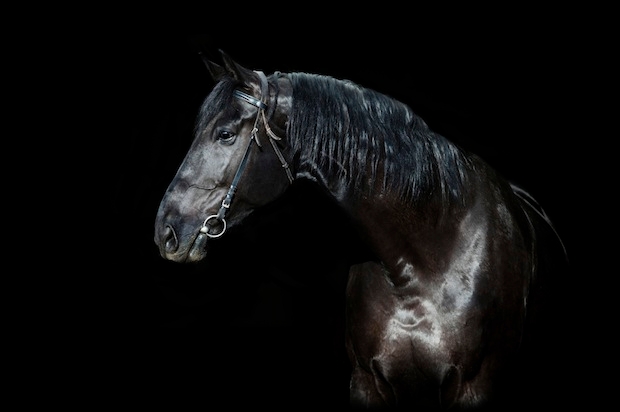In one of those old Mae West films a girl admires her friend’s jewellery: ‘Goodness, what lovely pearls,’ only to meet the reply, ‘Goodness, my dear, had nothing to do with them.’
The same was true of the sealskin fur coat and silk stockings worn by the gorgeous Micheline Lugeon, a would-be beautician from Switzerland who became notorious on British racecourses in the Sixties. Lugeon was the mistress of the high-rolling gambler-bookmaker Bill Roper. Roper, who maintained a wife in style as well, and put his children through private schools, needed money to keep the champagne flowing for his mistress at the Pigalle. To find it, he assembled a bunch of accomplices and started rigging races. They would look for small fields of five or six runners and incapacitate the favourite by doping it with barbiturates. They would then accept bets on the fancied horse knowing it could not win and make even more by backing the next best, having driven out its starting price to longer odds.
Roper’s gang nobbled dozens of horses, locating where their target’s box was within racing yards by sending in the lovely Micheline posing as a would-be owner thinking of sending the trainer two or three horses. Roper, pretending to be Madame’s chauffeur, would follow making notes. It was simple, audacious and highly profitable, at least until harder-line gangsters muscled in demanding protection money.
The gang’s story has been authentically chronicled by Jamie Reid in his clever period piece Doped (Racing Post, £20). While the Macmillan government fumbled its way through sex and spying scandals, racing’s authorities, the Jockey Club and the racecourse stewards, were revealing an equal incompetence and inability to face the real world. Time after time there was no inquiry or drug test when a favourite ran inexplicably badly.
In the end, Roper and Lugeon were caught and gaoled, briefly, along with other gang members. My only quibble is that the author seems a little in love with his villains: after all, they didn’t just defraud millions, but, especially when they started doping jumpers, they callously put lives at risk and deserved to face attempted-murder charges.
Enjoying reacquaintance with an old Dick Francis hero in his son Felix’s third solo novel Refusal (Michael Joseph, £18.99) reminded me that it was in Roper’s heyday in 1962 that Dick’s first novel Dead Cert was published. Between them, the Roper gang and the Francis family have done a lot to forge racing’s public image.
Forced for a post-operative month to eschew racegoing for reading, I found other pleasures. One of the most enjoyable tasks in a racing writer’s life is watching Nicky Henderson at his Seven Barrows stable in Lambourn. Such is his intensity when preparing his 140-strong string for the contests, which last year saw him win back the champion trainer’s title after 26 yearswith the help of such outstanding horses as Sprinter Sacre, Bob’s Worth, Simonsig and Long Run, that you want to plugyourself into whatever gives him his supercharge.
In the winner’s enclosure, few top trainers are as articulate and amenable, but for two years he has shied away as I have tried to persuade him to let me write his biography (and I am sure there are other literary suitors). After his annus mirabilis last season, Nicky did relent to the extent of allowing the Racing Post to produce Henderson’s Heroes—the story of an unbelievable season (£20). Illustrated with the best racing photographs I have seen, it offers some insights into Nicky’s training methods, pays appropriate tributes to work riders such as Nico de Boinville and conveys the Henderson lifestyle with his owners, summed up as ‘bloody good fun all the way’.
Best for me are the pen portraits of his equine stars. Of Bob’s Worth, the horse who ran twice last season and collected the Hennessy and the Gold Cup, his trainer says, ‘He is an adorable character, all he wants to do is please you. He isn’t a Sprinter Sacre, who wants to show off, he just hunts around without ever really being hard on the bridle. You would never notice him in the middle of a race and you wouldn’t notice him on the gallops but then at the second last you suddenly see Bob.’
With Nicky’s Sprinter Sacre now being hailed as the best since Arkle, my final bedside volume was Arkle, the legend of ‘Himself’ (O’Brien Press, Dublin, €18.99) by the indefatigable Anne Holland. Anne seems to know everybody in Irish racing, dead or alive. Her research is formidable and there are some good new anecdotes. Nicky Henderson bunking off Eton to watch Arkle was caught thanks to a last-fence crowd picture. And when John Oaksey asked Tom Dreaper if he could do some schooling the trainer replied, ‘Do you think you would improve any of them or would they improve you?’ It would, though, have been a better book if she had been content to give us the cream from the top and not the whole bottle.






Comments